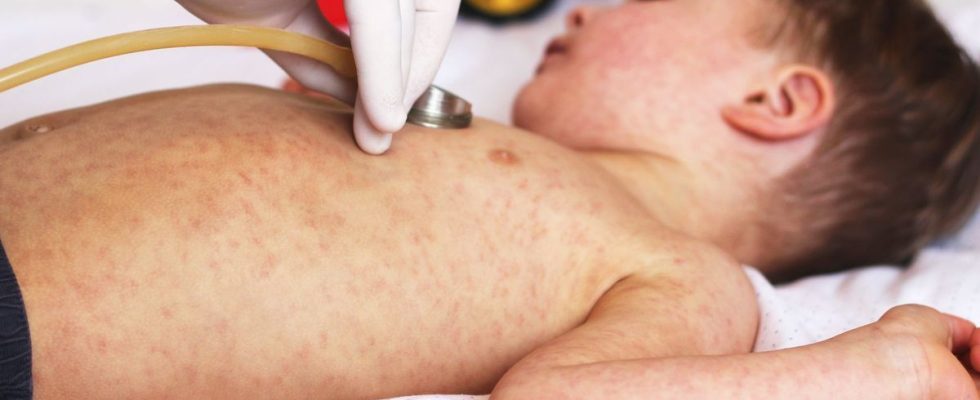Published on
Updated
Reading 2 min.
After Ardèche, Haute-Savoie and Drôme, it is the turn of the Rhône department to experience an upsurge in measles cases. A situation that the Regional Health Agency is closely monitoring, which considers that this is the start of a “localized epidemic”.
In a little over a month, between January 19 and March 8, 2024, no less than 25 cases of measles were reported in the Rhône. This is not the first time that the disease has plagued the region.
Indeed, since September 2023, around a hundred cases have been declared in Rhône-Alpes, particularly in the departments of Ardèche, but also in Drôme or Haute-Savoie.
A contagious disease, transmitted by a virus
Caused by a highly contagious virus, measles is transmitted through the respiratory tract, particularly through coughing or sneezing but also through handshakes and kisses. According to investigations by the ARS Auvergne-Rhône-Alpes, “the original case was each time an unvaccinated person, recently returned from a trip abroad“In the absence of prevention, it is estimated that a single patient can in turn contaminate twenty people.
Pay attention to the vaccination status of people born after 1980
Vaccination against measles (Measles-Mumps-Rubella or MMR) is mandatory for children born since January 1, 2018, with the first injection taking place at 12 months and the second at 16-18 months. But that wasn’t the case before. This is why the ARS strongly recommends that all people – children and adults – born after 1980 (children and adults) check their vaccination status. People born before 1980 have a good chance of being immune.
What are the symptoms and risks of measles?
The ARS finally calls for vigilance in the event of suggestive symptoms. These appear between 10 and 14 days after exposure to the virus. This is a high fever, accompanied by red and watery eyes, a runny nose, an altered general condition with significant fatigue and a rash, with small red spots on the body. If you notice these symptoms, you should consult a doctor immediately.
Finally, it is important to remember that respiratory or neurological complications can occur at any age after contamination, especially in pregnant women, children under one year old and immunocompromised people.
